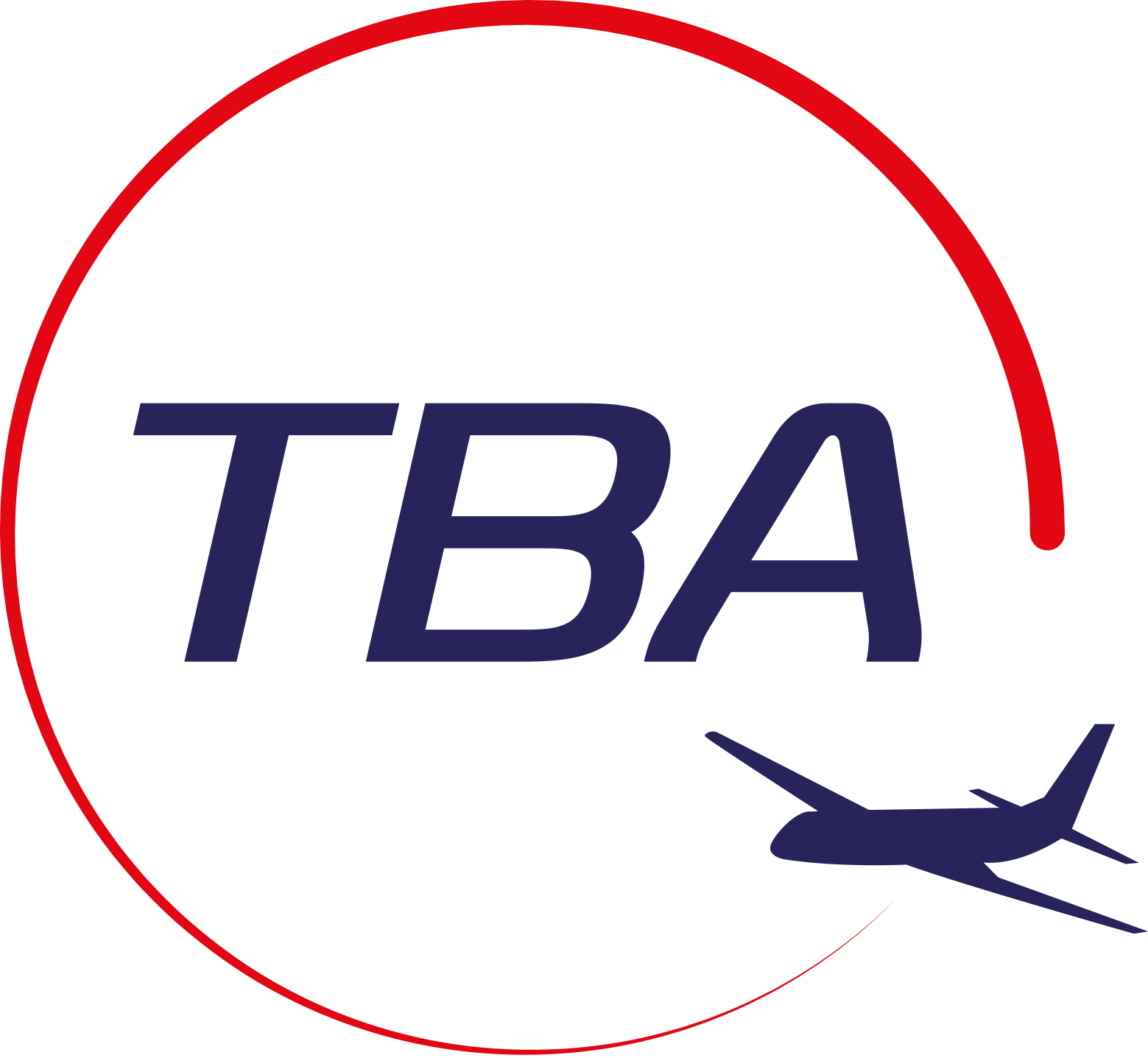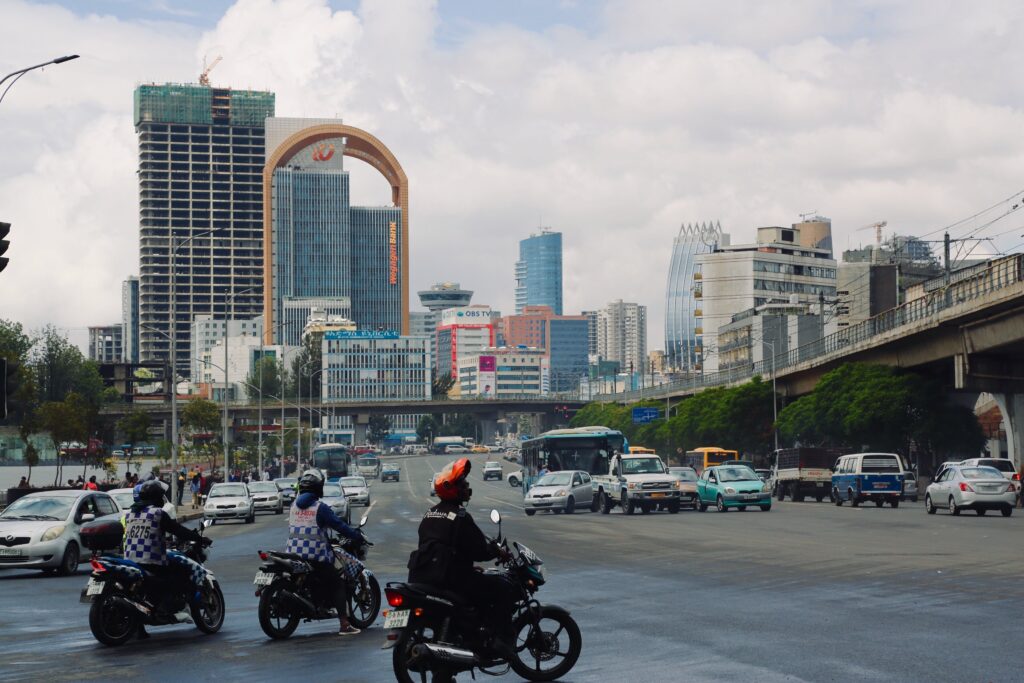
Research and knowledge are the first steps for Ethiopia Travel Business Assistance. Here is a fact file for Ethiopia to get you started. Contact us if you are looking to start a business in or expand your market to Ethiopia. We have consultants ready to help you on the ground in Ethiopia.
Get expert guidance for your business travels – Book your free consultation with Travel Business Assistance today.
Basic Facts
Origin of the name: Ethiopia derives from the classical Greek for “burnt face” (possibly in contrast to the lighter-skinned inhabitants of Libya). It first appears in Homer’s Iliad and was used by the historian Herodotus to denote those areas of Africa south of the Sahara part of the “Ecumene” (i.e. the inhabitable world). But the Greek term originally applied to Nubia (a.k.a. Kush). Later, it was adopted by the kingdom of Axum, a distant precursor to present-day Ethiopia.
History: Ethiopia, the oldest independent country in Africa and one of the oldest in the world has a rich history and remarkable landmarks. The Awash Valley in Ethiopia is home to the oldest remains of a human ancestor ever discovered, dating back around five million years. Historical accounts from the fifth century BC by the Greek historian Herodotus mention ancient Ethiopia, while the Old Testament in the Bible records the visit of the Queen of Sheba to Jerusalem and her encounter with King Solomon. Christianity arrived in Ethiopia through missionaries from Egypt and Syria in the fourth century. In the 1500s, the Portuguese sought to establish contact with Ethiopia to gain control over the Indian Ocean and convert Ethiopians to Roman Catholicism. Emperor Menelik II, reigning from 1889 to 1913, confronted European powers, with Italy posing the greatest threat. The Italian invasion in 1936 forced Haile Selassie to seek refuge in the UK. With the help of British forces, he reclaimed his throne after the defeat of the Italians.
Government: The prime minister of Ethiopia is the head of government and chief executive of Ethiopia. Ethiopia is a parliamentary republic with a prime minister as head of the government and the commander-in-chief of the Ethiopian Armed Forces. The prime minister is the most powerful political figure in Ethiopian politics. The official residence of the prime minister is the Menelik Palace in Addis Ababa. The prime minister is elected by the members of the House of Peoples’ Representatives and presents a government platform. The prime minister must receive a vote of confidence in the House of Peoples’ Representatives to exercise executive power as chief executive. Abiy Ahmed is the third prime minister of the Federal Democratic Republic of Ethiopia, serving since April 2018.
Official Language: Ethiopia is home to five official languages: Afar, Amharic, Oromo, Somali, and Tigrinya. The country also has several local sign languages.
Indigenous Languages: In total, there are 90 languages in Ethiopia, according to Ethnologue. 41 languages are classed as institutional, while 14 are developing and 18 are vigorous. Ethiopia also has eight languages that are in danger of extinction and five that are close to it. The Ongota language spoken in southwest Ethiopia, for example, had just 12 elderly native speakers back in 2012, according to UNESCO (Ongota speakers have instead adopted the Tsamai language).
Population: Estimations of the Ethiopia population are 127,520,519 inhabitants (2023 estimates). Ethiopia is the 12th most populated nation in the world, the 2nd-most populous in Africa after Nigeria, and the most populated landlocked country on Earth.
Time Zone: Ethiopia currently observes Eastern Africa Time (EAT). Eastern Africa Time is consistent with UTC +3. The Eastern Africa Time does not have an associated daylight-saving time. The Eastern Africa Time applies to 10 countries: Comoros, Djibouti, Eritrea, Ethiopia, Kenya, Madagascar, Mayotte, Somalia, Tanzania, and Uganda.
Climate: Ethiopia’s large land area and diverse topography result in different climates across the country and temperature and precipitation disparity across its regions. Ethiopia’s equatorial rainforests in the south and southwest are characterized by high rainfall and humidity, while the Afro-Alpine on the summits of the Semien and Bale mountains, and the north-east, east and southeast lowlands experience desert-like conditions. The highland regions in the center and north of the country experience cooler climates. The eastern corner of the country is very arid and experiences very little rainfall. Seasonal rainfall in Ethiopia is driven mainly by the Inter-Tropical Convergence Zone (ITCZ) migration and strong inter-annual rainfall variability across the country. Ethiopia has three rainfall seasons: Bega, Belg, and Kiremt. The primary rainy season, Kiremt, occurs from mid-June to mid-September and accounts for 50–80% of annual rainfall. Parts of central and northern Ethiopia experience a sporadic, secondary wet season, Belg, which often has considerably less rainfall and occurs from February to May. Southern regions of Ethiopia experience two distinct wet seasons, Belg, from February to May, and Bega occurring from October to December, which has drier and colder conditions. The mean annual rainfall distribution is approximately 2,000 mm over the south-western highlands and less than 300 mm over the south-eastern and north-eastern lowlands. Temperatures across Ethiopia can range from –15°C over the highlands, to above 25°C in the lowlands.
Borders: Ethiopia’s neighboring countries are Djibouti to the North East; Eritrea to the North; Kenya to the South; Somalia to the East; South Sudan to the West; and Sudan to the West. Ethiopia is a landlocked country and thus has no access to sea or ocean.
Size: The Total Ethiopia area is about 1,104,300 sq km of which land: is 1,096,570 sq km and water: is 7,730 sq km. It is to be noted that area numbers are approximate since a large portion of the Ethiopia-Somalia border is undefined. Ethiopia is slightly twice the size of France, or similar to the size of Bolivia.
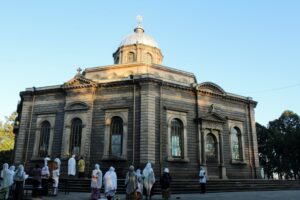
Religion: Religion in Ethiopia consists of a number of faiths. Among these mainly Abrahamic religions, the most numerous is Christianity (Ethiopian Orthodoxy, P’ent’ay, Roman Catholic) totaling 67.3%, followed by Islam at 31.3%. There is also a longstanding but small Ethiopian Jewish community. Some adherents of the Baháʼí Faith likewise exist in several urban and rural areas. Additionally, there is also a substantial population of adherents of traditional faiths.
The Kingdom of Aksum in present-day Ethiopia and Eritrea was one of the first Christian countries in the world, having officially adopted Christianity as the state religion in the 4th century. The Ethiopian Empire was the only region of Africa to survive the expansion of Islam as a Christian state.
Currency: The Ethiopian birr is the official currency of the Federal Democratic Republic of Ethiopia. The symbol for the birr is either “Br” (using the Latin alphabet), “ብር” (using Ethiopic script), or “ETB” (the ISO currency code). It is subdivided into 100 santim. The National Bank of Ethiopia issues the currency.
Banknotes in circulation are in the following denominations: 1, 5, 10, 50, 100, and 200 birr
Coins in circulation are in the following denominations: 1, 5, 10, 25, and 50 santim and 1 birr
The current exchange rate is 55.9735 Ethiopian birr to 1 US Dollar, or 68.1199 Ethiopian birr to 1 Great British Pound (18 October 2023).
https://www.oanda.com/currency-converter/en/?from=ETB&to=USD&amount=55.9735
https://www.oanda.com/currency-converter/en/?from=ETB&to=GBP&amount=68.1199
History and Key Events
Some key dates in Ethiopia’s history
- 4 million-200,000 years ago – Ethiopia is one of the most important sites for hominids (4-3 million years ago) and anatomically modern humans c. 200,000 years ago.
- 1st Century-960AD – Kingdom of Aksum. Based primarily in what is now northern Ethiopia, spanning Eritrea, Djibouti, and eastern Sudan and extending at its height into much of southern Arabia.
- 350 – Kingdom of Aksum adopts Christianity as the state religion.
- 1270 – Yekuno Amlak, who claims descent from the last Aksumite king and ultimately the Biblical Menelik I and the Queen of Sheba, founded the Ethiopian Empire, which lasted until 1974.
- 1855-1868 – Reign of Emperor Tewodros II, who lays the foundation for the modern Ethiopian state.
- 1896 – Invading Italian forces are defeated by Ethiopians at Adwa.
- 1935-1941 – Italy deposes Emperor Haile Selassie and annexes Ethiopia, before being driven out by British, Commonwealth, and Ethiopian forces.
- 1962 – Haile Selassie annexes Eritrea, which becomes an Ethiopian province.
- 1974 – Haile Selassie was overthrown in a military coup after the government failed to deal with famine.
- 1977-79 – Thousands are killed in “Red Terror” orchestrated by Marxist dictator Mengistu Haile Mariam.
- 1984-85 – Another serious famine devastates much of the country.
- 1991 – Ethiopian People’s Revolutionary Democratic Front deposes Mengistu. Meles Zenawi establishes stability and achieves considerable economic progress in his 19-year authoritarian rule.
- 1993 – Eritrea becomes independent.
- 1999-2000 – Ethiopian-Eritrean border war.
- 2020 – Tension with Tigray region leads to conflict. Eritrean troops intervene in the war with Tigrayan rebels on the side of Ethiopia’s central government.
- 2022 – Ethiopian and Tigrayan rebels sign a peace deal.
Ethiopian Food
The Ethiopian diet is very healthy and full of nutritious minerals. There are some key ingredients and foods that are key features in Ethiopian cuisine. Ethiopian stews, or wots, are a mixture of ingredients that create very tasty dishes. Ethiopian cuisine is based on the stew (wot) and there are many varieties, all providing different taste experiences. An important ingredient in Ethiopian food is the hot chili pepper Mitmita, which is often mixed with cardamom salt, and other spices depending on the local culture. Unique to Ethiopia is the way kibbeh (butter) is prepared. It is made using spices such as cardamom, turmeric, garlic, and kosher (lippia abyssinica) and is a very common ingredient. Ethiopians are Orthodox Christians and therefore observe Wednesdays and Fridays as fasting days when one meal is consumed in the late afternoon or evening. On these days, Ethiopians who observe the fasts abstain from eating animal products: meat, dairy, and eggs. A list of typical Ethiopian recipes:

Enkulal Ferfer (Scrambled Egg) Enkulal ferfer is made from eggs, onion, butter, and chili pepper and is served with injera or bread. Most people prefer to eat enkulal ferfer for breakfast and it’s a popular food with toddlers and children.
Bula is made from enset (a plant called Abyssinia banana that grows in southern Ethiopia). Bula is prepared in a similar way to porridge using enset and butter, and served for breakfast with a glass of milk.
Gomen is one of the tastiest dishes served on fasting days. It’s made from gomen (spinach), onion, and spices such as cardamom and black cumin. Gomen is served on injera with mitmita. But Gomen is not only a food for fasting. It can also be served on non-fasting days as a side dish with Ayeb, which is a dry cottage cheese.
Beyayenetu Beyaynetu is a fasting dish eaten all over Ethiopia. The word beyayenetu translates as “different types” and, as the name suggests, this dish is a combination of an array of fasting foods such as meser, gomen, vegetables, azifa, shiro, etc. all served on a large injera. Beyayenetu is a dish for bringing people together and can be found all over the country.
Kekel is a non-fasting food that is usually eaten during holidays. It’s made from the bones of an ox or a sheep and onion, mitmita, butter, and other spices that give the kekel a good taste. As always, kekel is served with injera. The dish also has medicinal properties. The juices are served as a soup to treat colds or flu. Kekel is also served to help mend broken bones.
Kinche (Oatmeal) Another breakfast staple is kinche. It is made from kinche (oatmeal) and butter, and, if you like, milk. Most often a glass of milk is served alongside kinche.
Shiro is probably the most popular Ethiopian fasting dish. Shiro is made from spiced chickpeas or bean puree, minced onions, garlic, and berbere, and is served with injera. Shiro is a very tasty dish and can be found just about all over the country.
Azifa (Pardina Lentil) is a fasting food made from meser, onion, and chili pepper. Many people enjoy azifa because it is hot. Those who like a really hot dish simply add more chili pepper. It’s usually served with injera but it can also be served with bread.
Doro Wot is a tasty Ethiopian dish that is mostly served on religious holidays and special occasions and offered as a sign of respect to welcome guests. Doro is prepared from a whole chicken cut into 12 parts and cooked with a hot sauce of berbere, onion, cardamom, and butter. After it’s cooked, boiled eggs are added and it is served with injera.
Lentil Soup in Ethiopia is prepared from lentils, onion, carrot, potato, macaroni, garlic, ginger, and cabbage. Most commonly, soup is served at dinner time and all family members gather around and enjoy the soup together. It is usually served with bread but can also be served with injera, depending on preference.
Things to See and Do
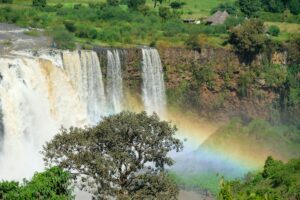
Ethiopia is the “Land of Thirteen Months”. It’s a magical country with ancient and spiritual roots, rich in significant religious history and that has a fabulous story to tell. The beauty of wild mountains is only surpassed by the awe-inspiring religious architecture that draws visitors to this amazing country. It’s where legends of the Ark of the Covenant live side by side and in harmony with ancient Islamic mosques. From thundering waterfalls to its vibrant and modern capital city, Addis Ababa, Ethiopia is a place you have to see to believe.
Abuna Yemata Guh: is a monolithic church located in the Hawzen woreda of the Tigray Region. Its entrance is highlighted by a red circle and has to be climbed on foot to reach. At 2,500 feet, Ethiopia’s ‘Abuna Yemata Guh’ is arguably the most inaccessible place of worship on earth, carved into the side of a cliff, with a sheer drop of 650 feet on all sides.
Danakil Depression: Numerous sulfur springs, volcanoes, geysers, acidic pools, vast salt pans, and colorful mineral-laden lakes dot the area, which formed above the divergence of three tectonic plates. Volcanic activity heats spring water, bringing sulfur and iron to the surface, and leaving behind yellow, green, and orange deposits.
Celebrating Timkat in Ethiopia: it is a celebration of Epiphany in the Ethiopian Orthodox Tewahedo Church and Eritrean Orthodox Tewahedo Church. The Festival, held on January 19 every year and 20 in a leap year as per the Ethiopian calendar, is one of the many Festivals in the Ethiopian and Eritrean Orthodox Churches.
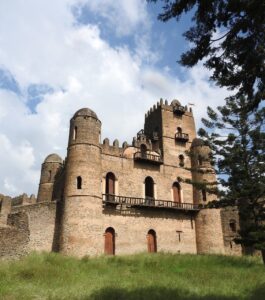
Gonder and the fortress city: Gonder was proclaimed the capital of Abyssinia by King Fasilides in 1636, when he proceeded to build his palace and the fortress city of Fasil Ginb. With its clutch of palaces, fortified castles, and richly decorated churches and monasteries, it’s one of Ethiopia’s eight cultural UNESCO World Heritage Sites. Here, you see Indian, Portuguese, and Moorish influences combined with Ethiopian traditions in striking public and religious buildings.
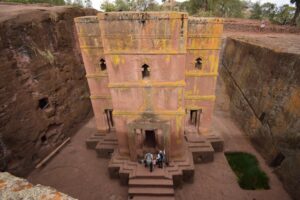 Lalibela Churches: The Rock-hewn Churches of Lalibela are located in the Western Ethiopian Highlands near the town of Lalibela, named after the late-12th and early-13th century King Lalibela of the Zagwe Dynasty, who commissioned the massive building project of 11 rock-hewn churches to recreate the holy city of Jerusalem in his own kingdom.
Lalibela Churches: The Rock-hewn Churches of Lalibela are located in the Western Ethiopian Highlands near the town of Lalibela, named after the late-12th and early-13th century King Lalibela of the Zagwe Dynasty, who commissioned the massive building project of 11 rock-hewn churches to recreate the holy city of Jerusalem in his own kingdom.
Danakil Depression: The lava lake at Erta Ale is one of only six lava lakes on Earth and will leave you in awe. The multi-coloured hydrothermal bubbling lakes and great salt pans will amaze you and have you question if you are still on Planet Earth. The site is also rich in fossils of ancient hominid. The famed fossil of “Lucy” was found in this area in 1974.
Ethiopian Easter (Fasika) Festival: the feast of feasts, is celebrated with special solemnity. The church is filled with fragrance of incense and myriads of lights. The clergy are arrayed in their best vestments. All the people hold lighted tapers. Greetings are exchanged, drums are beaten, hands are clapped and singing is heard everywhere: “our resurrection has come, hosanna.”
National Museum of Ethiopia: The National Museum of Ethiopia, situated in the heart of the capital, Addis Ababa, near the Addis Ababa University’s graduate school, is a repository of the country’s cultural, historical, and archaeological treasures. It is also recognized for housing significant paleoanthropological exhibits. The museum was conceptualized in 1936 with an exhibition of ceremonial costumes donated by the Solomonic dynasty.
Economy
 The economy of Ethiopia is a mixed and transition economy with a large public sector. The government of Ethiopia is in the process of privatizing many of the state-owned businesses and moving toward a market economy. The banking, telecommunication, and transportation sectors of the economy are dominated by government-owned companies. Ethiopia has one of the fastest-growing economies in the world and is Africa’s second most populous country. Many properties owned by the government during the previous regime have now been privatized or are in the process of privatization and the liberalization of its financial sector in the near future. However, certain sectors such as financial and insurance services, air and land transportation services, and retail, are considered as strategic sectors and are expected to remain under state control for the foreseeable future.
The economy of Ethiopia is a mixed and transition economy with a large public sector. The government of Ethiopia is in the process of privatizing many of the state-owned businesses and moving toward a market economy. The banking, telecommunication, and transportation sectors of the economy are dominated by government-owned companies. Ethiopia has one of the fastest-growing economies in the world and is Africa’s second most populous country. Many properties owned by the government during the previous regime have now been privatized or are in the process of privatization and the liberalization of its financial sector in the near future. However, certain sectors such as financial and insurance services, air and land transportation services, and retail, are considered as strategic sectors and are expected to remain under state control for the foreseeable future.
Doing Business In Ethiopia
Ease of Doing Business Index Scores
Overall score: 48.0 (2020)
Starting a business score: 71.7 (2020)
Trading across Borders score: 56.0 (2020)
Enforcing Contracts score: 62.8 (2020)
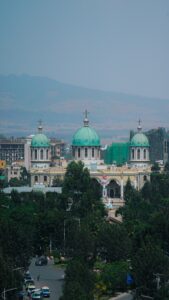 Legal System: Ethiopia is a federal state with a civil law legal system, combined with procedural laws principally inspired by the common law system. The sources of Ethiopian laws include the Constitution, International Treaties, Codes and Statutes, Decrees, Regulations and Directives, and Customary Laws. A ruling of the Cassation Division of the Federal Supreme Court on the interpretation of the law has a binding effect on Federal and State Courts. The Constitution provides legal status to some pre-existing religious and customary courts and gives federal and regional legislatures the authority to recognize other courts. Sharia courts may hear religious and family cases involving Muslims. By law, all parties to a dispute must agree to the venue before a customary or religious court may hear a case.
Legal System: Ethiopia is a federal state with a civil law legal system, combined with procedural laws principally inspired by the common law system. The sources of Ethiopian laws include the Constitution, International Treaties, Codes and Statutes, Decrees, Regulations and Directives, and Customary Laws. A ruling of the Cassation Division of the Federal Supreme Court on the interpretation of the law has a binding effect on Federal and State Courts. The Constitution provides legal status to some pre-existing religious and customary courts and gives federal and regional legislatures the authority to recognize other courts. Sharia courts may hear religious and family cases involving Muslims. By law, all parties to a dispute must agree to the venue before a customary or religious court may hear a case.
Company creation procedures:
- Reserve a unique company name at the Ministry of Trade or Trade Bureau at the sub-city level
- Authentication of the company documents and the lease agreement at the Documents Authentication and Registration Office (DARO)
- Obtain a tax identification number (TIN) at the Ethiopian Revenue and Customs Authority
- Register the company and obtain the Commercial registration certificate at the Commercial Register
- Make a company seal
- Register the company and employees with the Private Organization Employees Pension Fund
- Register with the Ethiopian Revenue and Customs Authority for VAT
- Publish name in a nationwide newspaper
- Reserve a unique trade name at the Ministry of Trade or Trade Bureau at the sub-city level
- Obtain a business license at the Ministry of Trade or Trade Bureau at the sub-city level
- Install a cash registration machine from the Ethiopian Revenue and Customs Authority or Point of sales software providers, and Cash register machine hardware providers
Ethiopian Investment Commission (EIC)
Ethiopian Investment Commission (EIC) is an autonomous government institution established in 1992 to promote private investment, primarily foreign direct investment. The overall activities of the Commission are supervised and followed up by an Investment Board, which is chaired by the Prime Minister. The EIC is headed by a commissioner who is also a member of the Board. The EIC has restructured itself recently to become more effective at attracting FDI and improving the services provided to investors.
The main services provided by EIC include:
- Promoting the country’s investment opportunities and conditions, especially to foreign investors.
- Issuing investment permits, business licenses, and construction permits.
- Notarizing memorandum and articles of association and amendments.
- Issuing commercial registration certificates as well as renewals, amendments, replacements, or cancellations.
- Effecting registration of trade or firm name and amendment, as well as replacements or cancellations.
- Issuing work permits, including renewals, replacements, suspensions, or cancellations.
- Grading first grade construction contractors.
- Registering technology transfer agreements and export-oriented non-equity-based foreign enterprise collaborations with domestic investors.
- Negotiating and, upon government approval, signing bilateral investment promotion and protection treaties with other countries; and
- Advising the government on policy measures needed to create an attractive investment climate for investors.
- In addition, the EIC provides the following free, confidential, and customized services to investors:
- Provision, through our website, various publications, or through direct response to investor’s inquiries, of information on sector-specific business opportunities, business incorporation procedures and related regulations, employment regulations.
- Handholding and supporting the investor during the acquisition of land and utilities (water, electrical power, and telecom services); the processing of loans and residence permit applications; and the issuance of a tax identification number (TIN).
Why invest in Ethiopia
Ethiopia has now become a preferred destination for foreign direct investment in Africa. Agro-processing sector accounts for about half of Ethiopia’s GDP, more than 80% of its export revenue, and 85% of its jobs.
The government has put in place integrated agro-industrial parks (IAIPs) which are regional agro-processing zones developed to attract investment and accelerate the growth of the agro-processing sector. These parks employ a holistic approach for input supply, on-farm production, backward market linkage, and raw material sourcing to ensure sustainability and efficiency.
Ethiopia’s vast land, favorable climate, and water and land resources combine to make it an incredible hub for investment. Located in the horn of Africa, Ethiopia is at the crossroads between Africa, the Middle East, and Europe. Within easy reach of the Horn’s major ports, Ethiopia is close to its traditional markets for export products – the Middle East and Europe.
Top reasons for investing in Ethiopia’s Integrated Agro-Industrial Parks (IAIPs)
- Ethiopia has huge investment potential in the agro-industry sector.
- The Government of Ethiopia provides broad-based support to investors.
- Over 54 million active labor force, trainable and available at a competitive age.
- Strategic location with proximity to the Middle East, Europe, and Asia.
- Well-developed infrastructure such as Ethio-Djibouti electric-powered railway and road networks.
- Ethiopia is a continental and global leader in the production of a variety of raw materials needed for processing.
- 5th largest producer of tropical fruits in Africa.
- 6th leading producer of livestock population globally.
- Wide-ranging incentive package for priority sectors including agro-industry investment area.
- Relatively low energy, water and land costs.
- Bilateral investment treaties (BITs) and double taxation treaties (DTTs) with a number of countries.
Investment Opportunities:
- Agro-processing industry: Ethiopia is a continental and global leader in the production of a variety of raw materials needed for Agro-processing Industries. Ethiopia has key advantages for dairy, juice processing, and edible oil processing industries. Ethiopia has the potential for poultry, beef production, and tomato processing. Integrated agro-industrial parks are under construction, and on the verge of being operational and specialized for Agro-Industry. The government of Ethiopia is offering attractive incentives for manufacturers -Incentives that apply to agro-processors include:
- Income tax exemption for up to five years if 60% of products are exported.
- Exemption from duties and other taxes on imports of machinery, equipment, construction materials, spare parts, raw materials and vehicles
- Full export duty exemption.
- Subsidized land leasing to private entrepreneurs
- Guarantee against expropriation and for repatriation of funds
- Facilitation of market linkages
- Pharmaceutical Sector: Ethiopia is one of the first African countries to develop a national strategy for pharmaceutical manufacturing. Its strategy is to grow exports in addition to substituting imports and improving access to medicines. The Government will develop state-of-the-art Industrial Parks specialized in pharmaceutical manufacturing. The goal is to become a pharmaceutical manufacturing hub in Africa. The Government will develop state-of-the-art Industrial Parks specialized in pharmaceutical manufacturing.
- Agriculture sector: Ethiopia is endowed with abundant agricultural resources and has diverse ecological zones for agricultural production. Investment licenses can be obtained from the Ethiopian Investment Commission and land can be leased for up to 99 years from regional and city administration bureaus. Recently, land allocation, compensation, and relocation have posed significant issues for the GOE in terms of equity and transparency. In addition, significant regional autonomy in Ethiopia means that respect for land rights varies across the country. U.S. companies should do their due diligence in advance of making investments requiring land use and/or relocation.
- Energy and Infrastructure: The Government of Ethiopia is hugely investing in mega social and economic infrastructure projects including power generation projects, industrial zones and parks, housing construction, water system and irrigation projects, roads and railways, airports and dry ports, telecommunication infrastructure, and sugar and fertilizer factories. Energy is one of the most significant sectors of Ethiopia’s economic growth and development. Ethiopia possesses a bounty of renewable energy potential, especially hydroelectric, and seeks to exploit these resources by increasing the installed capacity of renewable energy sources from around 2,100mw to over 25,000mw. Wind, geothermal, and solar power are major areas for investment opportunities.
Ethiopian Flagship Projects
Grand Ethiopian Renaissance Dam (GERD): The construction of the GERD commenced in April 2011 with ETB 80bn birr ($4.7bn) worth of contractual agreement with Salini Impregilo. The dam is fully financed by the Ethiopian People and Government. However, as a result of delays, the project financing has reached 163 billion birr. The reservoir and dam will offer major benefits to Ethiopia, Egypt, and Sudan. Aimed primarily at generating power, with an expected capacity of 5,150 MW, the main and saddle dams will also create reservoirs with an impounding capacity of 74 billion cubic meters.
Health
Proof of vaccination against Yellow Fever might be required for entry into Ethiopia.
It is strongly recommended that you visit a travel vaccination clinic and get other vaccinations and prophylaxis for malaria.
COVID-19
You no longer need to produce a COVID-19 vaccination certificate or a negative PCR test before or on your arrival to Ethiopia.
Immigration
A valid passport is required for travel to Ethiopia. Passports should have a minimum validity of 6 months and 2 blank pages.
All international visitors to Ethiopia can apply for their tourist visas (e-Visa) online at the following link: https://www.evisa.gov.et/ .
The e-Visa is processed and issued online by the Main Department of Immigration and Nationality Affairs, where applicants can securely apply and pay for their entry visa.
Some Interesting Facts About Ethiopia
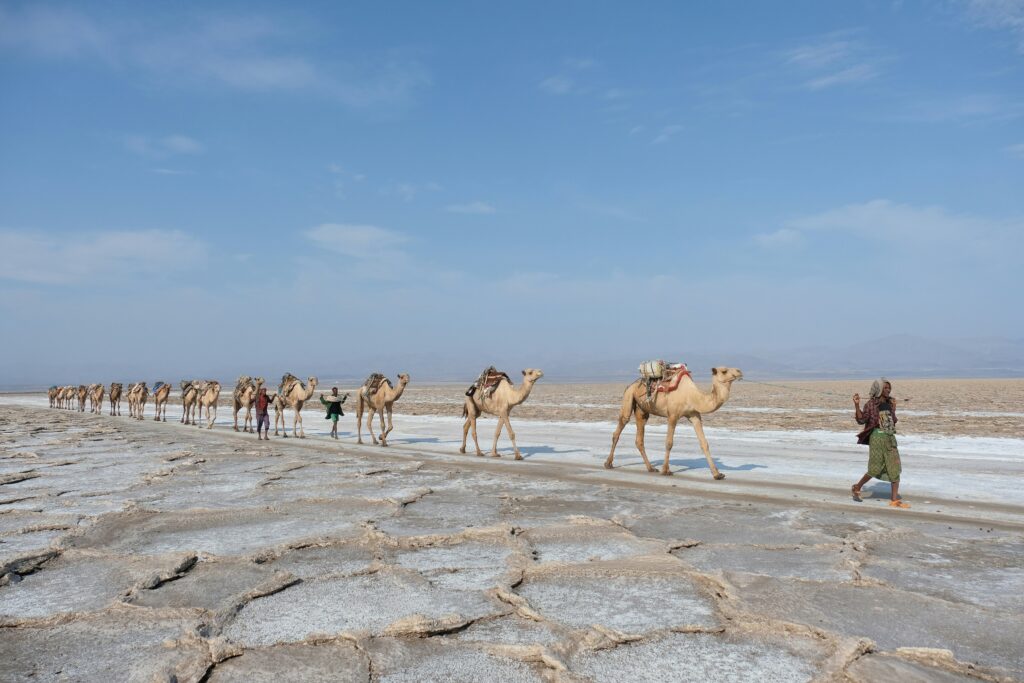
Ethiopia’s calendar will surprise you; Sure, plenty of cultures have their distinct calendars. Especially for religious observation. But, most all stay within 12 months. Ethiopia, however, observes 13 calendar months per year. This makes the Ethiopian calendar 7 years behind the rest of the world. Nonetheless, they’ve used it to their advantage with their tourism slogan being thirteen months of sunshine!
Mountains: Over half of Africa’s mountains are in Ethiopia. Along with Ethiopia’s incredible cultural and historical significance, the natural beauty is in a league of its own. In addition to a gorgeous landscape of low deserts and volcanic plateaus, Ethiopia is incredibly mountainous. Around 70% of Africa’s mountains are in Ethiopia.
Ethiopia Travel Business Assistance
Are you planning to move your business to Ethiopia or open up Ehiopia as a new market? Perhaps there is a conference in Ethiopia you need to attend and you need some help. We are here for your Ethiopia Travel Business Assistance.
